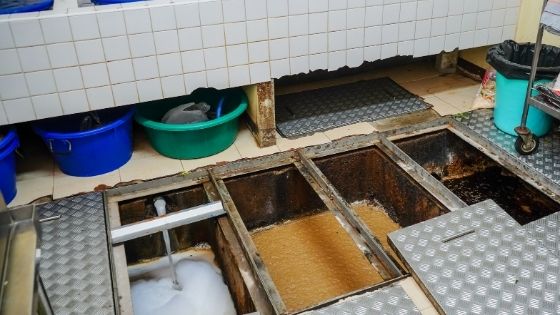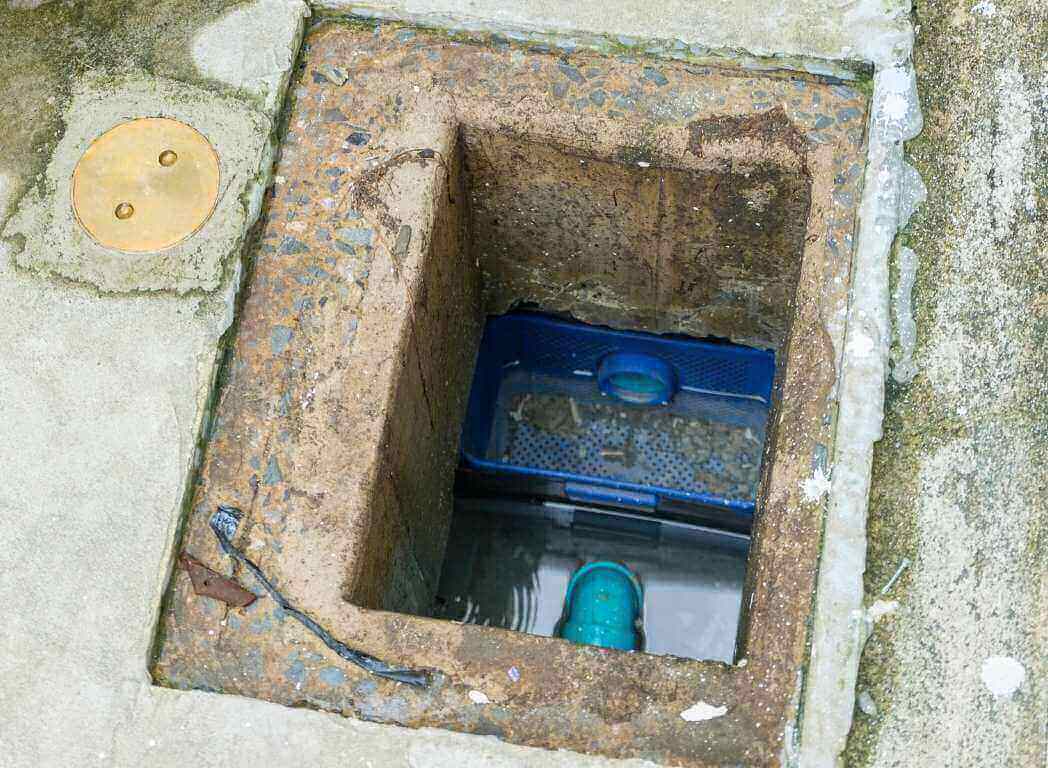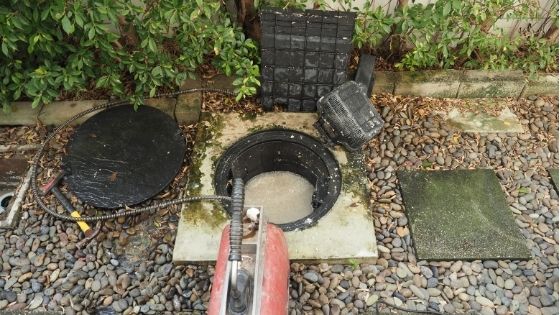A grease trap is a necessary piece of equipment for any reputable restaurant. Not only does it keep your staff safe, but it also ensures you comply with set local requirements and provisions.
Depending on your need as an establishment, you can choose from a few options in the current market.
In this article, Grease Cycle is going over everything you need to know about the cost of grease trap installation.
What is a Grease Trap?
There are several names and phrases that are used synonymously with grease traps. Some of them include grease converters, interceptors, catches, FOG traps or grease recovery/ management devices.
Grease causes significant damage to pipe drains and the sewerage system during its disposal. It costs municipalities and local authorities thousands of dollars in maintenance and has negative impacts on the environment.
Grease traps seek to intercept the fats, oil, and grease (FOG) before they escape through the outlet and into the drainage system.
As mentioned earlier, there are laws in place that require installation of grease traps. Food service operators can face heavy fines and, in some cases, closure of their restaurants, if grease management is not up to code.
The Types of Grease Traps
A major factor that will determine the cost of installation is the type of grease trap you have.
There are three main types of grease traps that restaurant and other food service providers can choose from:
1. The Passive Hydro Mechanical Grease Trap
This is also known as the traditional or manual grease trap. This type of grease trap is common in small restaurants or establishment.
Smaller manual grease traps are installed under the sink while the larger option is typically in an underground location.
The passive hydro mechanical grease trap is typically made from stainless steel or plastic. It must also be cleaned on a more regular basis.

2. The Automatic Grease Trap
This grease trap is also referred to as AGRU’s.
Automatic grease trap systems are more efficient than the Passive Hydro Mechanical Grease Trap. The efficiency comes with a higher cost in terms of initial investment. Restaurants, however, enjoy savings in the long run with lower servicing and maintenance costs.
The automatic systems make use of a heating system that re-heats the FOG before skimming it into a collector bin. Operators will have set the system to a programmed schedule, dependent on the amount of FOG produced by the establishment.
With the automatic systems, operators don’t have to check whether the grease collector bin is full. They can rely on the programmed schedule.
3. The Gravity Grease Trap
The gravity option is typically an in-ground tank made from fiberglass, steel or concrete. It has a larger capacity than the earlier mentioned options and is considered ideal for establishments with high-flow needs.
Gravity grease traps should be pumped out by a reputable and experienced grease service company.
Other Factors that Determine the Cost of Installation
1. Size of the Grease Trap
Depending on your needs (flow rate, size of the restaurant, etc.), you will choose a size for your grease trap.
Small traps, which are typically installed indoors, require frequent pumping to remove the FOG.
Bigger traps, on the other hand, will require less frequent pumping as they are able to hold more gallons of grease.
To install a bigger sized pump, you will need to incur a high initial investment cost. But in the long run, you will make bigger savings due to efficiency and less time spent on pumping.

2. Professional Cost
The cost of pumping out the FOG varies depending on the locality and the labor rate. For affordable grease trap pumping services, call upon the #1 rated company in North Carolina: Grease Cycle.
3. Outdoor Installation
For those looking to get a big grease trap, it most probably requires an outdoor installation. Part of the ground needs to be excavated to prepare room for the large concrete, fiberglass or concrete tank.
As the restaurant owner, you will have to incur some costs in the cleaning up of the space.
4. Permissions & Approvals
To order to have a grease trap installed in your restaurant, you need to place the proper groundwork by paying the required permit fees and approvals.
It is important that you know that it’s illegal to operate your food service establishment without a grease trap. Therefore, the installation must occur before the opening of the business.
Maintenance
Not only do you have to consider installation costs of the grease trap, but you must also consider long-term maintenance costs. Most restaurant owners tend to forget about this.
Grease traps must be cleaned on a regular basis for efficient and smooth operation of the restaurant.
The grease collector bin/receptacle needs to be cleared using specialty tools and equipment.
Frequently Asked Questions (FAQ)
Here are some other frequently asked questions about grease traps:
1. What size of trap do I need?
If it is for your house, consider a small traditional grease trap that can hold up to 200 gallons.
For commercial establishments, consider an automatic option that can hold thousands of gallons worth of FOG.
2. How often should the grease trap be cleaned?
It is recommended that it be cleaned at least once every quarter.
This is also dependent on the rate of flow and your needs as a business. If you are located in the North Carolina area, rely on the sound and professional advice of Grease Cycle.
3. How long does the installation process take?
The installation process varies with the size of the grease trap and the location of the site.
Depending on where it's located and the size of the property, some may even need surface preparation.

Professional Grease Trap Pumping and Oil Recycling
Are you on the lookout for a local grease trap cleaning service provider? Your search has come to an end. Grease Cycle is the company to call upon!
We are a certified NCDEQ company with the experience, expertise, and capacity to provide grease trap maintenance and pumping services. All our services are tailor-made to meet your exact needs – whether that be replacement of a metal container, regular maintenance, or our oil recycling services.
Keeping in check with the latest environmental standards, Grease Cycle recycles the waste and cooking grease from your traps into a renewable biofuel.
Get in touch with us today and inquire of our grease trap pumping and oil recycling services.